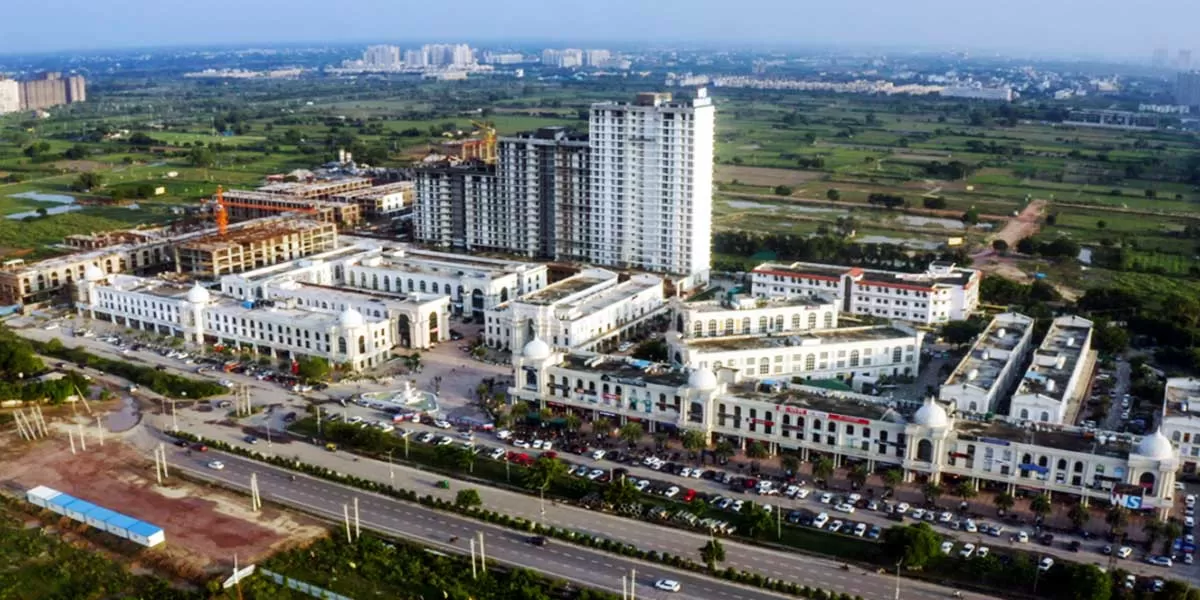If we take a look at history as also the contemporary world, women continue to play an
important role in shaping the world as we know it today. In the domain of form and function too
women architects and designers have adorned living spaces and other areas with their
creativity. So what is it like to be a sacred feminine in a profession which decades ago was seen
as a male bastion.
Pragya Sanghavi, Designer, Pentaspace Design Studio points out “Earlier, architecture was
a male-dominated industry. Le Corbusier, Frank Lloyd Wright, etc., were always at the forefront,
until Zaha Hadid, the woman from Iraq, really changed the game for women in architecture as
well as engineering. She gave us confidence that we, as a gender, could establish ourselves as
architects and designers, have our own practice and design studios, and make an identity in the
world.”
Today the gender parity is probably much lesser and contribution of the woman kind in
contemporary architecture and design is being noticed. Sanghavi is quick to add that
“Contemporary architecture did not 'allow', but rather 'facilitated' to bring women into the
limelight. Architecture as an industry was always seen as a taboo for women globally due to
site-related work, dealing with contractors, and getting the work done from the related
construction sectors.”
Ameeta Sharma - Menon, Principal Architect of Pune based Mu design says
“Contemporary architecture has definitely been inclusive to women in terms of the validation
and sensitivities that are offered by a female perspective. In the grand scheme of the project, we
offer probably a more in detail understanding which goes in hand with the contemporary
architecture style. We are better in fact, at judging the pros and cons of the design elements of
the project than most male counterparts in certain unidirectional / typical thought processes.”
The process of problem solving in architecture and design is not just limited to the
commandments of science and creativity alone. Apart from the IQ the EQ too has a key role to
play. When it comes to EQ even experts agree women have an edge, so does that make them
better architects and designers Ameeta would like to believe so “Yes, it does give us a better
edge in trouble shooting not just the design / technical issues but also the on-site/off-site
processes. We are better equipped to gauge and mitigate the complexities of large-scale
projects. We are also sensitive to the so called “soft” facets of design which plays a major role in
the overall success of any project. Personally, as a firm we do deal in a lot of luxury/high-end
projects wherein the end result corresponds to a lot of micro detailing and the eye for the finer
things that are clearly an input from the feminine counterparts in the studio!”
Highlighting the intrinsic quality of women to put their hearts to work, Pragya too reflects a
similar opinion “Women always think from the heart and do everything under one roof. We are
mothers, so it is our natural quality that we are more patient compared to men. We take major
decisions and we can deal with several relations and make things work. So design comes out
truly from our heart. Designing needs patience as several things need to be taken care of in the
process. Women are great designers because of the higher EQ that we share in gender as a
whole and that is the reason why women are doing so well in the design industry today.”
While the world likes to address gender parity of the feminine kind, it is equally important to
notice that this stereotypical approach does harm to both the genders, not just females alone.
Today creativity of the design kind is often seen as a feminine trait as opposed to anything
which pertains to hardcore construction wherein it is drafted as a domain of the alpha male. So
if it's fashion design or interior design, it is a reserved area for females and arenas like
construction and manufacturing is where the male kind rules. Such conclusions are a fallacy!
“We all have both masculine and feminine traits,” says Surkasha Acharya, Founder, Midori
Architects, “Creativity is considered feminine trait because it's considered intuitive and
receptive. But that doesn’t mean only females can be creative. Another good instance is
ambition that is considered a masculine trait but many women these days I know are overly
ambitious!”
Shami Goregaonkar, Design Director, GA Design adds “It is important to recognise that
creativity is a universal human trait that is not limited by gender. Everyone has the potential to
be creative in their own unique way and it is important to encourage and support diverse forms
of creative expression without gender-based expectations or limitations. By promoting
inclusivity and diversity in creative fields, we can help to break down the notions that have
resulted in gender-based stereotypes.”
“I think creativity is fluid and cannot be identified as a gender stereotype,” says Ameeta “yes, we
as women have an upper hand on certain aspects in design while the male counterparts have
their own aspects and abilities in design. Ultimately, a good design strikes the perfect balance in
all these aspects considered as a whole.”
Balance is perhaps the right keyword to use, the manifestation of existence as also creativity as
we know it, is a proper combination of elements which are opposites just like male and female
and that’s the beauty of nature. In India even our religious ecosystem espouses a balance,
there are gods and then there are an equal number of goddesses. Hence many view woman’s
day as a western concept, given this backdrop it is important to question to what degree has
women’s day highlighted the expertise of Indian women architects and designers in the global
arena or is it just a bonhomie of the feminine kind in the west
Pragya points out “Indian women architects and designers are increasingly being noticed and
recognised globally for their contributions to the field of design. In recent years, there has been
a large number of women who have been felicitated in the design field thereby leading to
greater encouragement and global opportunities for us to showcase our work outside of our
country. Moreover, several Indian woman architects and designers have also been actively
involved in promoting gender equity and social justice through their work. For example, the late
Indian architect and activist Revathi Kamath has worked on several projects aimed at
improving the living conditions of women and marginalized communities in India. In recognition
of her contributions to sustainable architecture and heritage conservation, she has received
numerous awards, including the prestigious Padma Shri award from the Government of India,
as well as some international honours.”
As time goes by here’s hoping that more and more Indian women are recognised for the efforts
they put in, not only in the architecture and design sector but in the concept of nation building
as a whole. A well-balanced life doesn’t seek matriarchy or patriarchy, it will not plunge males
and females into a never ending war. Rather, it seeks the ability to evolve and adapt, it seeks
to resolve issues that need a resolution, it seeks happiness and gratification in personal and
professional domains . With these thoughts to ponder upon, we like to wish you a “Happy
Women’s Day”


















